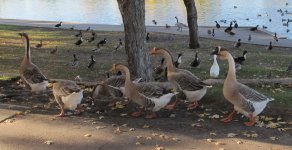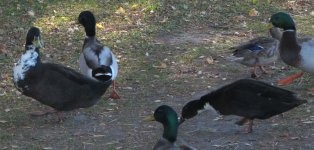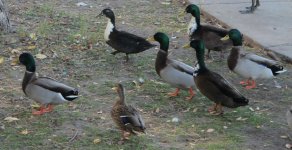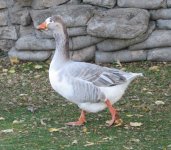Domestic Duck refers to Mallard that have been bred for meat, eggs or their looks. They often escape, or are released, and, as they are still technically Mallard, interfered with wild birds. This means you end up with a bewildering variety of different looking birds - that are referred to as 'Domestic Duck', 'Mucky Ducks', 'Yuck Ducks' and, quite often, worse names. One thing to look out for is the couple of curly feathers above the tail. If it has them then it's a male Domestic Duck - regretfully the females don't have them but you'll soon learn to recognise the general look. The black duck with the white breast is another form of Domestic Duck. Behind the log at the rear of the Chinese Geese and Greylag x Chinese, in the first photo, there is the head of a Greylag x Canada peeking out. I think the top two birds to the right of the tree trunk, in the first photo, may be Ruddy Ducks, at least the right hand one of the two has the appearance of a male.
Chris





![Goose[1].jpg](/data/attachments/430/430201-51072bcd4afb45e0bef8c2114bc1b10d.jpg)


